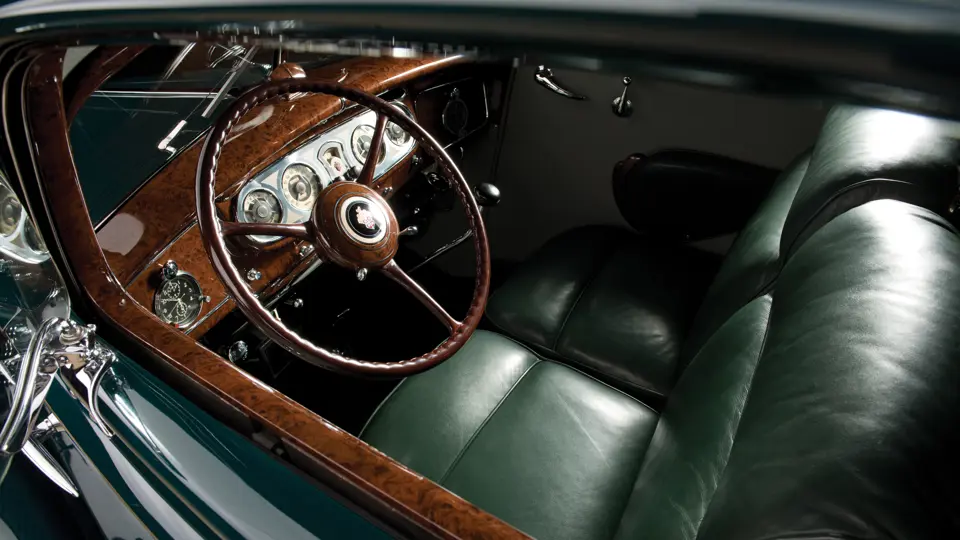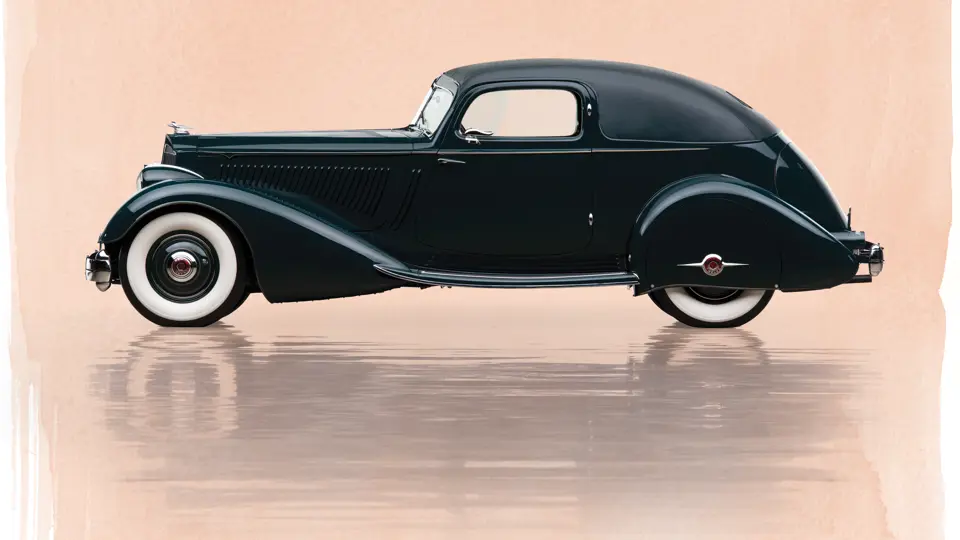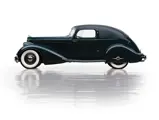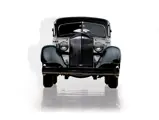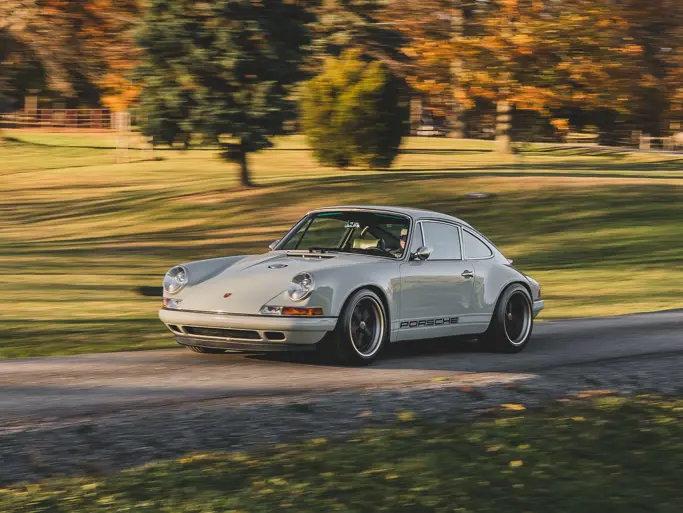
1934 Packard 1106 Twelve Sport Coupe by LeBaron
{{lr.item.text}}
$2,200,000 USD | Sold
{{bidding.lot.reserveStatusFormatted}}
- The last of four built; numerous one-off features
- The 1934 New York Auto Show car
- Distinguished provenance, including long-term Texas history
- One of the most important Classic Era Packards
- A once-in-a-lifetime opportunity
Series 1106. Body Style 4070. 160 bhp, 445.5 cu. in. modified L-head V-12 engine, three-speed selective synchromesh manual transmission, vacuum-assisted clutch, shaft drive with a hypoid rear axle, front and rear leaf-spring suspension, and four-wheel vacuum-assisted mechanical drum brakes. Wheelbase: 135 in.
Packard’s most beautiful automobiles of the 1930s were arguably produced as part of the Eleventh Series, and they boasted the first gentle hints of streamlining, such as a slightly angled radiator shell, more deeply skirted fenders, and vee’d headlamp lenses. The 12-cylinder models of this series were the ultimate Packards, and the ultimate of the ultimate were the versions designed by Alexis de Sakhnoffsky and built by LeBaron, of Detroit. These scarce cars featured the latest in aerodynamics, including separate sensuously rounded pontoon fenders, curved running boards nearly blended into the body, and tapered tails. They were the hottest thing to come from East Grand Boulevard in years.
Two of the LeBaron styles, the Runabout Speedster and the Sport Coupe, were given their own unique, sporty chassis, which ended up being a shortened 136-inch wheelbase variant of the Twelve platform, known as the 1106. The chassis was mounted on a sturdy Standard Eight frame, and it utilized the V-12 engine. The Sport Coupe, with its fastback roofline inspired by the Mercedes-Benz Autobahn-Kurier, was the real shape of things to come, so it is no wonder that Packard tried to claim credit for it; the bodies may have been built by LeBaron, but they were attributed to the Packard Custom Body Division.
Packard historians generally agree that four Sport Coupes were produced, while older references list only three survivors. Today, all four have been located, and one of them is the car offered here.
THE NEW YORK SPORT COUPE: VEHICLE NUMBER 1106-4
The fourth and final car, vehicle number 1106-4, is the vehicle offered here. It is powered by engine number 901601—a number that is important to verifying its history, as will soon be seen. The engine is, in itself, the lowest engine serial number known of the Eleventh Series, and it is either the first or second V-12 engine built for that series.
Vehicle number 1106-4 was photographed when new on the famous “turntable” at the Packard factory. This photograph clearly shows that when it was first built, the car had the same fixed rear quarter “teardrop” windows and steel roof as the other three Sport Coupes that preceded it, as well as conventional 1934 Eleventh Series front end styling.
Following the 1934 show season, 1106-4 was returned to the Packard factory and updated with the Twelfth Series’ new front sheet metal, which included a more angular grille and head lamps, as well as a leather-covered padded roof that obscured the rear quarter windows. It was then returned to the turntable and photographed again, this time as it appears today.
Copies of these photographs, which feature the car in both its Eleventh Series and Twelfth Series forms, are reproduced here courtesy of Michigan State University. The MSU copies are, importantly, both inscribed with “engine no. 901-601,” which is the engine that is still under the hood of this important Packard today, and they also identify this car in both its forms as being the 1934 New York Auto Show car.
According to Edward J. Blend’s book, The Magnificent Packard Twelve of Nineteen Thirty-Four, vehicle number 1106-4 remained with Packard for five years, and it was originally delivered to a Pittsburgh industrialist, Mr. Braeburn, in 1939, which was also the year that it was first titled in Pennsylvania. It was kept at the garage of the Morrowfield, an exclusive hotel and apartment complex in Pittsburgh’s Oakland district.
Mr. Blend notes that the car was sold out of Pittsburgh 10 years later. It made its way to Texas, and for many years it was part of the collection of James Tagliabue, a Houston-area funeral director with a large stable of Packards, which all had padded roofs and were painted dark green. The late Robert K. Voss, a long-time Packard enthusiast from Texas, recalled seeing the car in the Tagliabue Collection, and he confirmed that, at the time, it was still in its original and unrestored condition and finished in Packard Green, as it is today. By this time, the car is recorded by Blend as having adopted its present vehicle number, 783-4, which is a reference to its Packard style number and body number.
The car was restored in the 1980s while part of the prominent Jerry J. Moore Collection in Houston, and it was exhibited by Moore at numerous concours d’elegance. Today, it has a 1983 AACA National First Prize badge and a CCCA National First Prize badge, number 1049. It was eventually sold into the ownership of renowned collector Arturo Keller, in whose stable it remained for many years. Mr. Keller traded the car to David Kane, of New Jersey, for another Packard, of which he was enamored, and it was then passed to well-known enthusiast Carmine Zeccardi, from whom it was attained by the Andrews’.
This well-known and highly regarded Sport Coupe is featured in Hugo Pfau’s The Custom-Bodied Packard (page 151), Dennis Adler’s Packard (page 57), Beverly Rae Kimes’s Packard: A History of the Motor Car and the Company (page 438), and Michael Lamm and Dave Holls’s A Century of Automotive Style (page 221). It has been well-maintained and properly conserved as part of the Andrews Collection, with only the gentle patina of age found in its paint and matching leather interior. The temptation is to drive it and see what that hot drivetrain will do, but also equally tempting is the thought of a show restoration, one that will see this onetime dazzler once again entrance audiences.
Simply put, the New York Sport Coupe remains very much a showstopper.




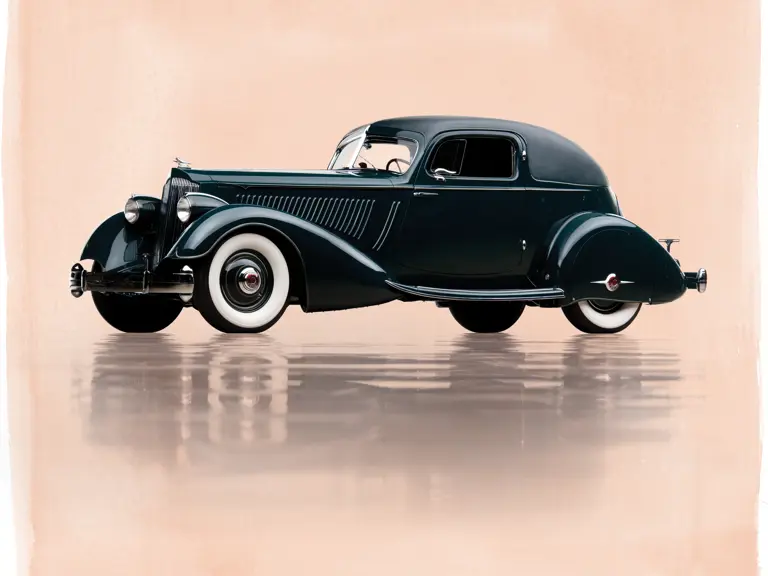
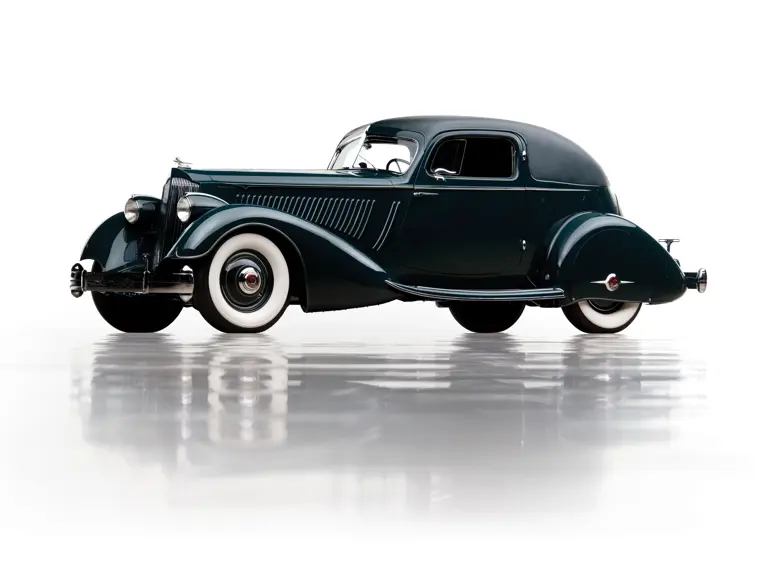

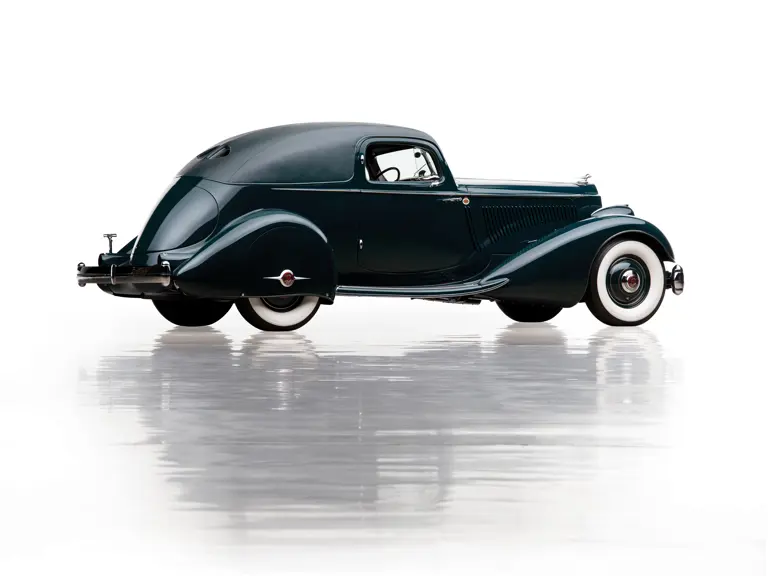
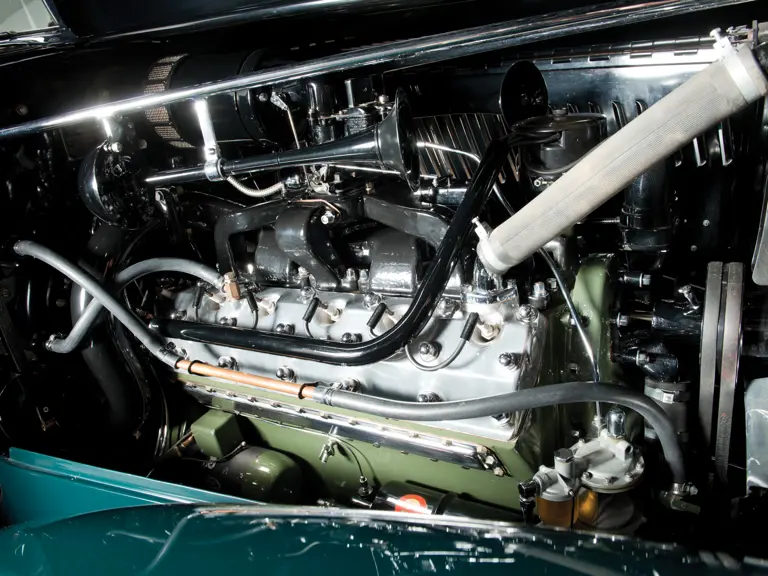
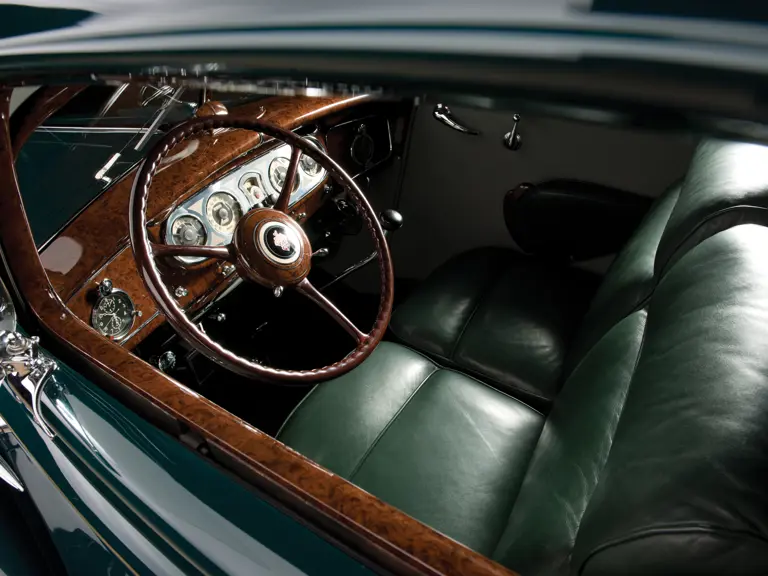
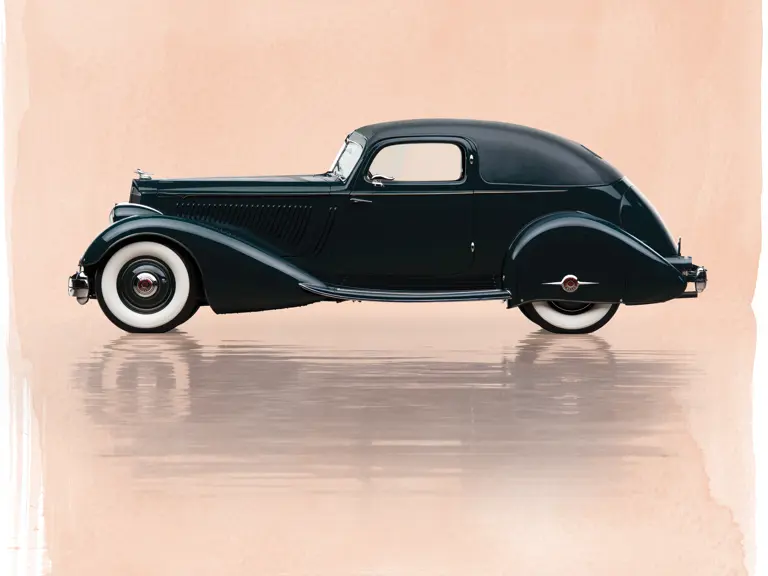
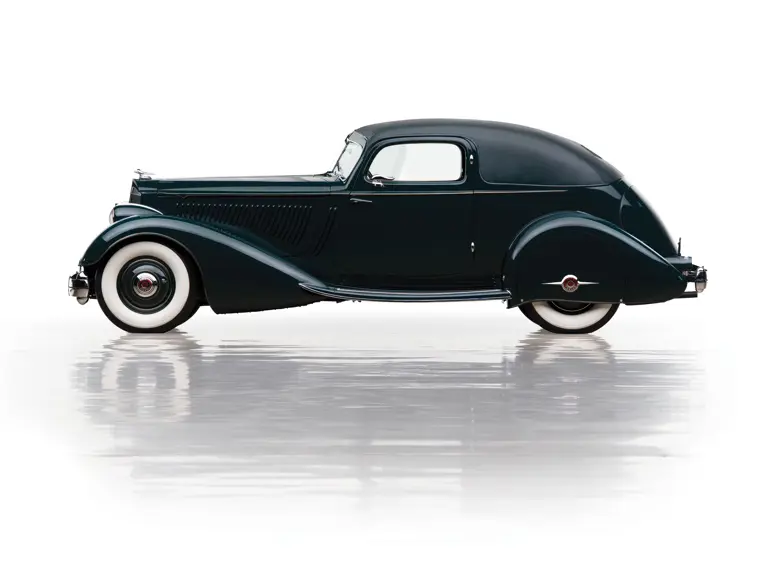
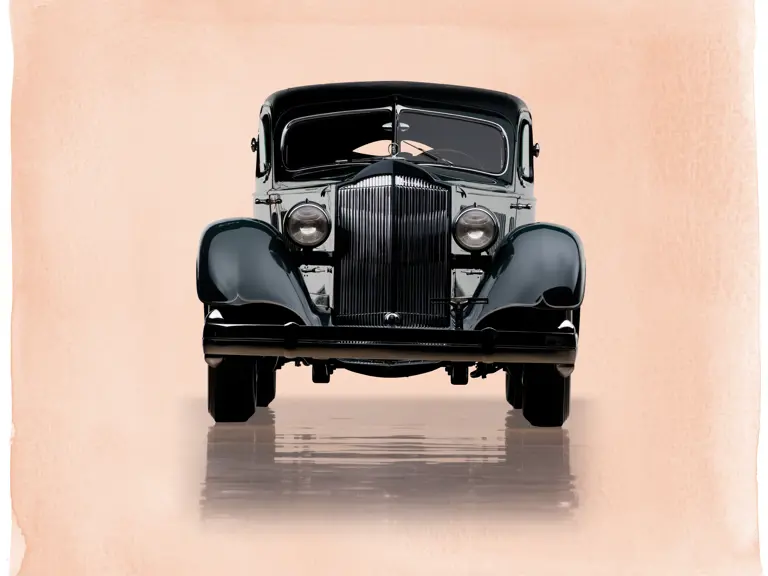
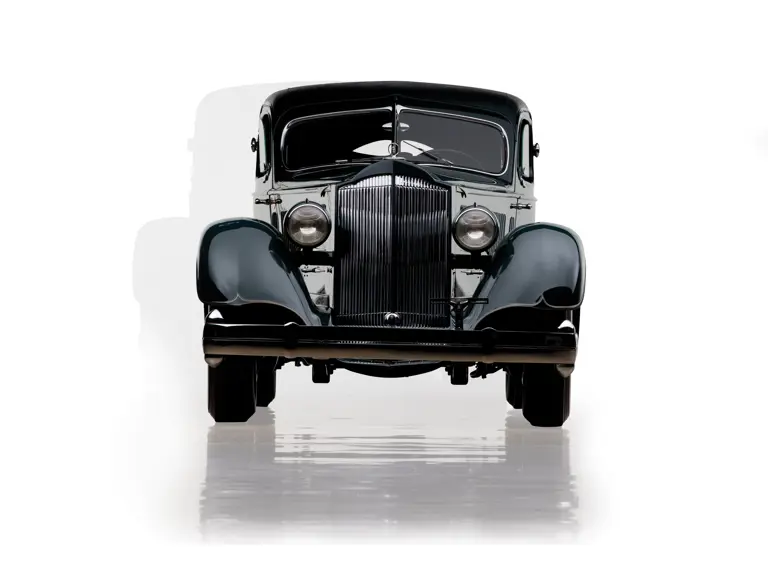
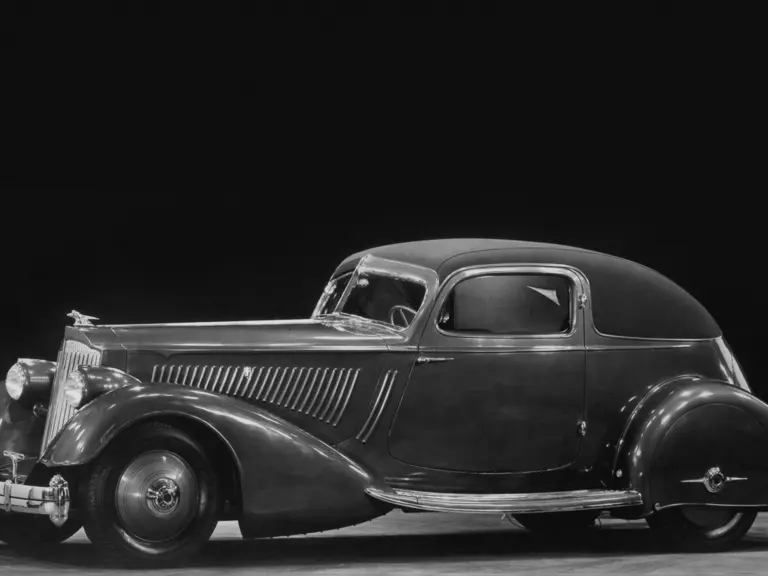
 | Fort Worth, Texas
| Fort Worth, Texas

